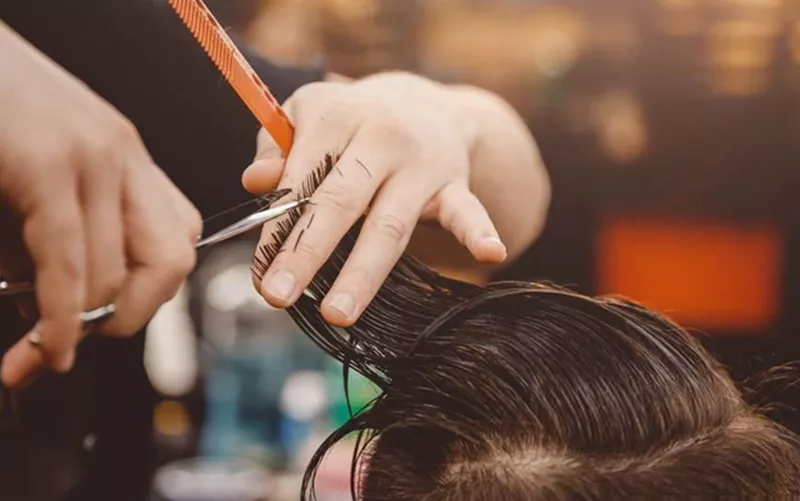Trimming your hair is one of the most important steps in maintaining healthy, beautiful locks. But how often should you do it? The answer isn’t the same for everyone. Factors like hair type, length, styling habits, and damage levels all play a role.
In this guide, we’ll break down everything you need to know to create a trimming schedule that works for you.
Why Trimming Matters
Hair trimming isn’t just about keeping your style fresh—it’s about health. Here’s why regular trims are essential:
Prevents Split Ends: Split ends occur when the hair shaft frays due to damage. Once a split starts, it travels upward, weakening the hair. Trimming removes these splits before they worsen.
Promotes Growth: While trimming doesn’t make hair grow faster, it prevents breakage. Healthy ends mean you retain length over time.
Improves Appearance: Trims remove dull, damaged ends, making hair look shinier and fuller.
Maintains Style: Regular cuts keep layered, blunt, or asymmetrical hairstyles looking intentional.
Skipping trims might save time short-term, but it often leads to more drastic cuts later.
Factors That Determine Trimming Frequency
Hair Type
Your hair’s texture and curl pattern affect how often you need trims:
Straight Hair: Straight hair tends to show split ends more easily. However, it’s often less prone to tangling. Trim every 8–12 weeks to maintain smoothness.
Wavy Hair: Waves can hide minor damage but may frizz when ends are frayed. Aim for trims every 10–12 weeks.
Curly/Coily Hair: Curly hair is drier and more fragile, but curls can mask splits. Still, to prevent tangles and retain shape, trim every 12–16 weeks. Over-trimming can disrupt curl patterns.
Thick vs. Fine Hair: Thick hair can go longer between trims (10–14 weeks). Fine hair breaks easily and may need trims every 6–8 weeks.
Hair Length
Short Hair (Pixie, Bob): Short styles lose shape quickly. Plan trims every 4–6 weeks to keep lines sharp.
Medium-Length Hair: Shoulder-length hair benefits from trims every 8–12 weeks. This prevents a “grown-out” look.
Long Hair: If you’re growing hair out, trim every 12–14 weeks to remove splits without sacrificing length. For maintained long hair, opt for 10–12 weeks.
Hairstyle Details
- Bangs/Fringe: Bangs require frequent trims—every 3–4 weeks—to stay out of your eyes.
- Layers: Layered styles need trims every 8–10 weeks to prevent unevenness.
- Blunt Cuts: Sharp, blunt ends show wear quickly. Trim every 6–8 weeks.
Chemical Treatments & Damage
- Colored/Bleached Hair: Chemical processes weaken hair. Trim every 6–8 weeks to manage dryness.
- Heat Styling: Daily blow-drying or flat-ironing? Trim every 8–10 weeks.
- Perms/Relaxers: These treatments stress hair. Schedule trims every 8 weeks to avoid breakage.
Environmental Factors
- Sun Exposure: UV rays dry out hair. In sunny climates, trim every 8–10 weeks.
- Chlorine/Saltwater: Swimmers or beachgoers should trim every 8 weeks to combat brittleness.
- Cold/Dry Air: Winter weather causes split ends. Add an extra trim during colder months.
Signs You Need a Trim
Don’t wait for your next appointment if you notice:
- Split Ends: White dots or frayed strands.
- Tangling: Hair knots easily, even with conditioner.
- Dryness: Ends feel rough or look dull.
- Uneven Growth: One side appears longer.
- Limpness: Hair lacks volume at the roots (due to weight from damaged ends).
How to Extend Time Between Trims
With proper care, you can stretch your trimming schedule:
- Use Heat Protectant: Always apply before styling.
- Deep Condition Weekly: Repair damage with masks or oils.
- Avoid Tight Hairstyles: Ponytails and braids cause stress.
- Sleep on Silk: Reduces friction and breakage.
- Trim Split Ends Yourself: Carefully snip individual splits with sharp scissors.
Common Trimming Myths Debunked
“Trimming Makes Hair Grow Faster”: Hair grows from the scalp, not the ends. Trimming removes damage so hair appears longer.
“You Can Repair Split Ends”: Once split, ends can’t be healed—only cut.
“DIY Trims Are Just as Good”: Professionals spot hidden damage and ensure even cuts.
Should You Trim at Home or Visit a Salon?
- Salon Pros: Stylists have training, proper tools, and an objective eye. Ideal for complex cuts.
- DIY Tips: If trimming at home, use sharp shears and cut small sections. Avoid cutting hair wet (it shrinks as it dries).
Final Tips from a Pro
- Consult Your Stylist: They’ll personalize your schedule.
- Invest in Quality Tools: Sharp scissors prevent further damage.
- Listen to Your Hair: Adjust timing based on its behavior.
Conclusion
Regular trims are the secret to healthy, vibrant hair. While general guidelines suggest 6–16 weeks, your ideal schedule depends on your unique hair type, habits, and goals. Pay attention to your hair’s signals, protect it from damage, and don’t skip salon appointments. With consistent care, you’ll enjoy stronger, longer, and more beautiful hair.
Related topics:
Can You Wet Your Hair After a Perm: Post-Perm Care
How Much Does Laser Hair Restoration Cost?
How Long Does Blonde Dye Last?


